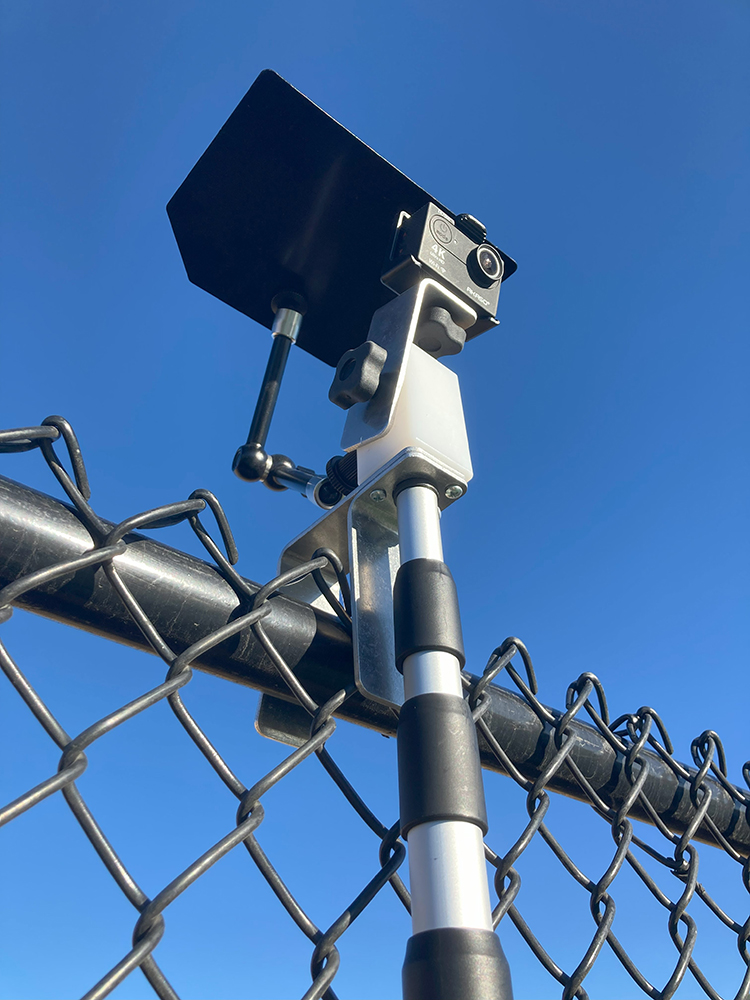‘Improving the Feedback Loop
One of the many reasons I was drawn to college tennis coaching was because of the incredible feedback loop it provides between the coach and player. As college coaches, we get to witness a very high percentage of our players’ matches throughout the year. Not just that, but we get to sit on the court with them and monitor their self-talk, emotional state of mind while getting a better understanding of their decision making. This is incredibly valuable information to any coach as it informs us how we should coach and what we need to be working on in practice the very next day!

College Tennis Coach Observing Play
When I grew up, I had one, 1-hour lesson per week with my coach and maybe he would see me play a couple of matches per year. I know that this has improved a lot through the years but I don’t believe it is still close enough to where it needs to be in the junior tennis world. Many players are not very adept at objectively self-analyzing their own matches at a young age, and part of this is because they haven’t seen themselves play often enough.
I can’t tell you how many times one of my players comes off after a match and gives me their version of what occurred. Early in their college career, their interpretation of what transpired during the match is often way off. If I had not just witnessed it, I would have no choice but to believe their version of events and then get to work on what they told me in our next session together.
As coaches, we want to ensure that our practices are deliberate and relevant. I can’t tell you how great I feel after most individual sessions with my players. I think we had gotten lots of productive work done and that we had fixed whatever maladies in her game she was experiencing at that time. Then we go to play a match and it looks nothing like the practice session we had two days prior! Now there are obviously a lot of reasons for that but if I had not seen the match first hand, then I may have continued on with my line of thinking as to what was the best way to develop this player’s game.
I guess we could tell by results and outcomes, but as coaches, we tend to be more process orientated and if the player is very young then we are not going to get wrapped up in the score line. We are far more interested in whether or not what we are doing in our training sessions is translating on match day, and if they are staying true to the process. But how do we know if we cannot be there to witness their matches firsthand?
I know it is extremely expensive and unrealistic to have coaches going to every tournament with players. What I am proposing though is that more emphasis be placed upon coaches getting consistent feedback through the use of video footage to help better develop their players. Despite the improvements in technology and reduction in costs associated with capturing live play, I still rarely see matches being taped when I go recruiting.
There are very few junior coaches in attendance at these tournaments, so we are relying on a young player’s version of events or the biased opinions of a parent. As an industry, shouldn’t we be pushing harder to make this more of standard? Would it not be better if one lesson was on the court working on different aspects of the player’s game and the next lesson sitting together for an hour and watching the video from a match? Or better yet, a combination of the two? Wouldn’t this make the session far more deliberate?
I would estimate that one hour of watching video of a match with your student is more valuable than several private lessons on the court. I understand that most parents want to see their kid out on the tennis court working hard on their game with the coach and hitting as many balls as possible, but we have to reeducate them on what is the most productive use of their child’s time and their hard earned money.
Our system here at the University of Oklahoma is to take the video from matches [note: Oklahoma uses the QM-1 Camera Mount], break down the relevant parts into clips with notes written at the top of each clip, and put it on our players google drive accounts ($1.99 per month). It is time consuming but incredibly valuable for the players and the coaches. Our players can log on at any hour of any day and visually learn about their game. Remember, over 60% of people are visual leaners. As a coach if you don’t have a camera, I highly recommend you purchase one; it will pay for itself a thousand times over.
Maybe you can lend it to your players from time to time when they are playing out of town. If this is not possible, maybe you can have the parent use their phone or I-pad to record crucial moments of a match, serving for a set, a third set tiebreak etc. Ideally you want to see what your players are doing at the most crucial stages of a match.
Ultimately, we have to improve the feedback loop if we are to help our players learn more efficiently and effectively. As we all know, practice and performance can often look like two completely different animals. We want to aid in the process of bringing those worlds closer together so that our players are practicing like they compete and vice versa.”
Here’s my favorite part: I would estimate that one hour of watching video of a match with your student is more valuable than several private lessons on the court. Makes sense to me! I talk to coaches and players every day, and they echo the same sentiment – once you use video and see what it can do for your game, it becomes indispensable! And the cost of two or three lessons may easily pay not only for your QM-1 Camera Mount, but even the camera itself (assuming you buy the K-1 or K-2 bundle).
Above is an example of a lesson I took with David Lowenthal on the slice backhand. I reviewed this right after my lesson and could still remember how it felt. And towards the end I see David’s backhand slice – the way he take the racquet back, the way he turns his shoulders and the way he finishes. Now I FELT like I was hitting it like him – but I can see I am NOT! So it’s back to the mirror and mimicking how he hits his backhand. Repeating this process over the course of a month has made a big difference – that video is coming soon!














0 Comments